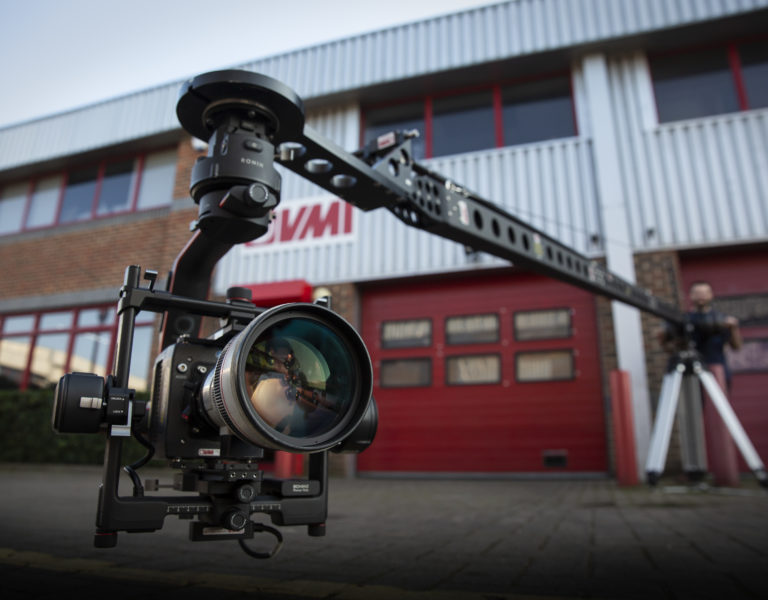Deal or no deal
Accessing funds to finance equipment has got harder but there are routes to capital that specialist brokers can help SMEs to navigate.
The economic downturn, interest rate rises, inflation and the writers’ strike, plus ongoing budget cuts for unscripted TV among public service broadcasters, have combined to make the equipment asset finance market the worst it has been for years.
“It’s a perfect storm that was not forecast,” says Duncan Payne, director, Adamantean. “The current market is like nothing we’ve seen in years.”
“A number of issues have conflated to raise the barrier to entry for those companies in this sector seeking access to finance,” says Tom Perkins, director and co-founder at Charles & Dean.
The impact has been felt most by the kit rental companies. Manchester’s Pro Motion Hire was bought out of administration at the beginning of this year by Pixipixel rental but major rental company Procam Take 2 couldn’t be saved when it went bust in July.
Asset finance is the most common use of funding for any production equipment used by equipment rental companies, freelance camera operators, production companies and post facilities among others. According to Payne, this group “has been on an absolute rollercoaster since February 2020, with no sign of this feast or famine ending any time soon”.
From the outside it would seem as if interest rate volatility would be a major factor on a client’s ability to finance new gear. Experts takes a longer-term view.
“Sure, interest rates have gone up but the average over the last 50 years is over 7%,” says Payne. “The issue is that rates have seen a sharp rise after being so low for long.”
Banks do want to lend, he insists, in marked contrast to the financial crisis of 2008 when the number of lenders to the media industry in the UK was in the single figures. “There was a liquidity crisis. Now banks have lots of money to lend to media businesses albeit at currently higher rates.”
It may be more expensive to borrow money but the bigger issue is the rise in the cost of kit. Global inflation and supply chain pressures have seen all manufacturers put prices up, resulting in more of an issue than interest rates. Payne cites the example of the launch of a new high-end camera 18 months ago which larger rental companies ordered by the dozen. Since then, the model’s price has risen 20%, making it a lot harder for individual camera operators to buy.
Creative Vision Finance (CVF) director Rebecca Price, however, disagrees, saying that rising kit cost is not a factor when she speaks to prospective buyers. She says people are still buying albeit being more considered about what they purchase by analysing the return on investment, which can be no bad thing.
“You can’t just go with a gut feel of whether an asset is going to work. Customers should be quite scientific about what they are buying and how much it will make them back over what period. That’s not necessarily the same kind of thought process as [before the credit crunch].”
She stresses the fundamentals of business – turnover, profit and cash – and castigates companies for not putting enough emphasis on cashflow. That includes kit rental firms.
“You’d be surprised the number of times businesses talk about how big their turnover or profit is while neglecting to chase invoices, not give credit terms, not keeping on top of debt or doing due diligence on their clients. It’s all well and good invoicing but you’ve got to make sure the money comes back. Having cash reserves in place helps me if they want asset finance and helps them to weather any economic storm.”
Strikes take their toll
The strikes, ongoing since June, have caused episodic and feature productions to down tools. Rental outfits looking to amortise their kit suddenly have excess high-end cameras and lenses in stock and are striking deals at lower prices to attract productions of unscripted TV, commercials or pop promos.
“Too much kit is chasing not enough work,” says Payne who believes the shortfall will be temporary.
“Clearly, the industry at some point is going to go back to making TV and movies. It will get resolved at some point, it’s a question of when.”
Perkins says the strike has delayed investment. “People with capex have put those plans on halt and are not taking delivery of kit. They don’t want that investment to be speculative.”
Price highlights a nervous feeling in the market due to the uncertainty caused by the strikes. “Lots of different factors mean the economy is depressed and growth is weakened but areas of the business are doing well.”
Outside of scripted drama, for example, the live entertainment and sports business is booming.
“Investment in outside broadcast is definitely ramping up, as is the need for cameras and display screens at concerts, festivals and corporate events,” she says. “This has really taken off post-COVID. Even though the market on the high-end side is dampened, other parts of the camera business remain strong.”
Payne supports this, saying, “Sport is at the vanguard of broadcast technology where the demand for new creative angles or more immersive experiences is really driving kit purchases.”
Arena impact
The fallout from outside broadcast company Arena TV’s fraudulent activity has negatively impacted media in bankers’ eyes, according to Payne.
High street banks such as NatWest and Clydesdale Bank were among 55 lenders exposed to the crime, most secured against assets that did not exist.
Payne says he has tried to repair the damage by reassuring banks that the media sector is still a good place to lend to.
“Suddenly media became a really dodgy place to lend money to. This situation was clearly a fraud, perpetrated by a small number of individuals, and this could, and indeed has happened just as easily in construction, catering, or manufacturing as in the sector that we focus on.”
Compared to construction or manufacturing, media is a drop in the ocean when it comes to finance. Banks can ignore it. Payne, Price and others advocate on its behalf.
“The banks took their eyes off the ball and lost money. As a consequence, they categorise a cinematographer or a freelance TV cameraperson in the same bracket as Arena TV. It’s all media. The scrutiny involved in trying to get any deal over the line has become more difficult even it’s very much a case of shutting the gate after the horse has bolted.”
Education, that’s what you need
“The reality is the asset finance industry is very buoyant with a lot of new lenders and an appetite to lend,” says Perkins. “But the challenge in the TV and film space is that the kit we are effectively funding – where lenders get their security in the form of asset finance – is often an asset class that many lenders don’t understand because it is so specialist.”
This was a challenge long before COVID, yet the arts, along with hospitality, were the sectors most impacted by loss of business during the pandemic.
“The progressive nature of tech development poses a risk because there’s a perception of high depreciation in addition to uncertainty about where to physically dispose of the kit,” he says. “Lenders don’t necessarily want to end up with kit that they have to take back as an asset with no knowledge of how to dispose of it.”
Part of a specialist broker’s role is to educate banks about the diversity of the media sector – and to help the media sector understand that there are plenty more routes than the high street.
Perkins says, “SMEs generally and companies in media specifically don’t know where to go for funding if the high street says ‘no’. The high street is saying no more often because of the closure of high street banks. You don’t have a business account manager to talk to unless you’ve got a £30m balance sheet, which most SMEs do not.”
However, there’s an entire community of lenders who do want to lend money, that SMEs are unaware of. Brokers act as a conduit to those funds.
“Anything with four wheels or a trailer that moves kit around and has a serial number is saleable in an auction and simple to fund,” says Perkins. “Lenses, audio kit, rigging, generators – even luxury loos for a film set – any ancillary production requirements are much harder to finance. All those assets have a different risk profile. The more specialist lenses, for example, are generally much harder to fund.”
Lenders will put a heavier emphasis on checking the business’ [accounts] while the terms of the finance will be more intensely scrutinised.
“I have that challenge with lenders who understand the sector but for those lenders who don’t know about lenses they genuinely believe there is no route to market for funding,” he says.
An example is the Recovery Loan Scheme (RLS) Phase 3, a hangover from measures introduced during COVID to prop-up business and provide lenders with security in terms of a 70% government backed guarantee on losses.
“Businesses needing to make capital investment need to make the most of it since we don’t know how long its’s going to be around for,” says Perkins. He urges the media industry to utilise funders “who understand the kit and a broker like ourselves who can navigate the market and make sure that the kit is understood by the right people. We should be using these government incentives to make access to funding as readily available as it is needed.”
Adamantean has funding arrangements with 25 banks because each will have a different lending policy. Some won’t lend against second-hand kit, some only want to deal with businesses turning over at least £20m, some will be fine with broadcasters but won’t lend for purchase of LED screens.
The broker is “truly independent” in terms of being unaffiliated with any reseller. “That allows us to focus on our customers’ needs and not have any other agenda other than to look after our customers,” Payne says.
CVF is 75% owned by CVP and this helps to ground conversations about technology when trying to onboard a new funder, explains Price.
“We walk them around CVP to give them an idea of what a camera kit is. We explain that you may get a camera body for £50K but also spend £40K on accessories that are essential items for the camera to work and for the camera person to do their job.”
She adds, “Were a customer to go direct to a high street bank to borrow £100k for an Alexa – the bank manager will think, ‘That doesn’t have four wheels’ and deny the loan. They understand the second market for cars but not about the reselling of lenses. That’s why specialist funders like us work within the industry. For example, we can teach those with capital about equipment depreciation in our industry.”


















